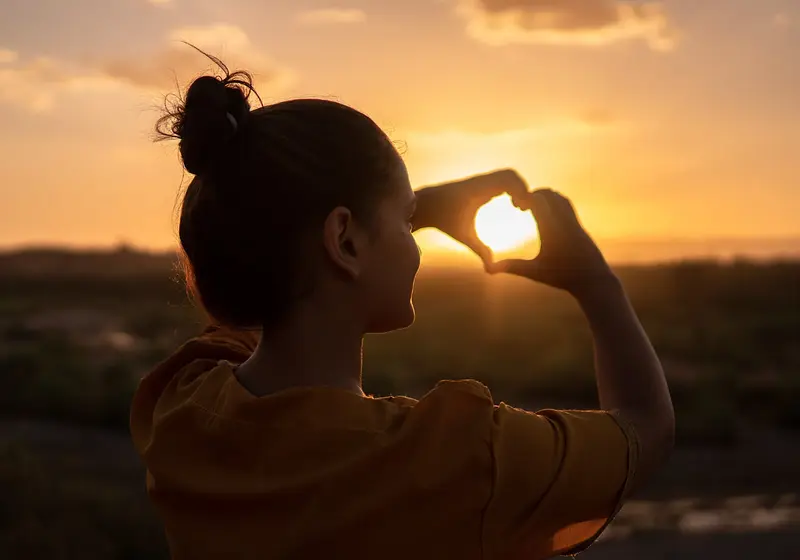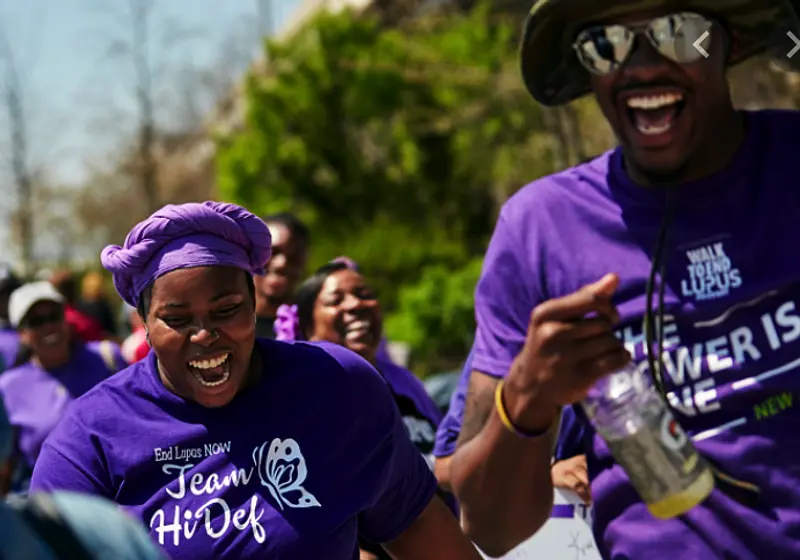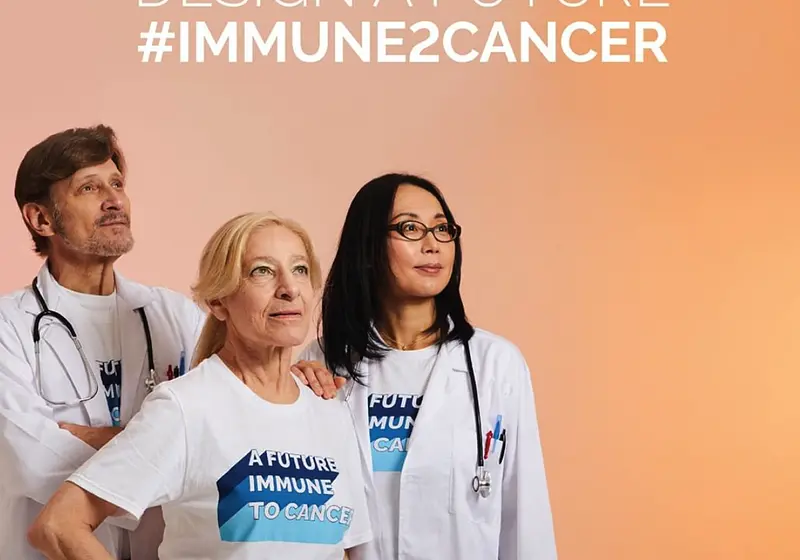With millions of people diagnosed each year, you may know or know of someone who has been diagnosed with cancer.
According to the Centers for Disease Control and Prevention, cancer is responsible for the second-highest number of deaths in the United States. (Source: Mortality in the United States, 2020, data table for figure 4)
Cancer is a disease in which malignant cells are spread at an abnormal growth, which can lead to devastating outcomes for people's health. Among the many different types of cancer, 1-in-5 cancer diagnoses among young people are lymphoma.
Let us slide into your dms 🥰
Get notified of top trending articles like this one every week! (we won't spam you)Why You Should Care
As difficult as the subject is, because lymphoma is such a prevalent cancer in teens and young adults, it is important that we are informed of exactly what it is.
The Teen Magazine had the opportunity to interview the Chief Executive Officer of the Lymphoma Research Foundation, Meghan Gutierrez, to further inform young people about this form of blood cancer.

image credit: Lymphoma Research Foundation
The Lymphoma Research Foundation is the nation’s largest non-profit organization devoted to funding lymphoma research and education, advancing both the study of new cancer therapies and improved patient care.
-Lymphoma Research Foundation
Could you tell us what lymphoma exactly is, and the difference between the three major categories of cancers that affect lymphocytes: Hodgkin lymphoma (HL), non-Hodgkin lymphoma, and chronic lymphocytic leukemia (CLL)?
Lymphoma is the most common type of blood cancer. Specifically, lymphoma is a cancer that affects lymphocytes, which are a type of white blood cell. The three major categories of cancers that affect lymphocytes are Hodgkin lymphoma (HL), non-Hodgkin lymphoma (NHL), and chronic lymphocytic leukemia/small lymphocytic lymphoma (CLL/SLL).
Did you know that every five minutes someone in the U.S. is diagnosed with #lymphoma? Join us in raising awareness of this disease during #BCAM, visit https://t.co/NVYsShYmEa today.
— Lymphoma Research Foundation (@lymphoma) September 4, 2021
CLL/SLL is the same disease with slightly different manifestations, determined by where the cancerous cells gather. Approximately 19,000 people are diagnosed with CLL/SLL in the United States each year.
HL is an uncommon type of cancer that affects the lymphatic system, usually found in the lymph nodes, and is characterized by the presence of very large cells called Reed-Sternberg (RS) cells. Approximately 9,000 people are diagnosed with HL in the United States each year.
NHL is not a single disease but rather a group of several closely related cancers, called lymphoid neoplasms. Like HL, NHL is a type of cancer that affects the lymphatic system, usually found in the lymph nodes, but this classification of lymphoma does not involve Reed-Sternberg cells. There are more than 90 types of NHL and it is the seventh most common cancer affecting adults in the United States
What is the Lymphoma Research Foundation’s (LRF) mission?
The Lymphoma Research Foundation’s (LRF) mission is to eradicate lymphoma and serve those touched by this disease.
Through lymphoma-specific research grants and consortia, LRF seeks to better understand the more than 100 subtypes of lymphoma and support the development of new treatments. LRF’s focus on supporting early-career scientists ensures the best and brightest remain in the field of lymphoma research so that innovation and progress continue. Simultaneously, LRF works tirelessly to help patients, survivors, caregivers, and families understand their diagnosis and ensure they have access to the support and resources they need.
When was LRF formed and why?
LRF was formed in 1995 by Barbara and Jerry Freundlich. Through their own journey with non-Hodgkin lymphoma, they recognized the need for a lymphoma-specific organization that could provide increased funding for lymphoma research and support to other families impacted by lymphoma.
It was then that LRF’s Scientific Advisory Board (SAB) was also established to help guide LRF’s research agenda and offer their expertise to inform LRF’s programming and patient resources.
How does LRF advance lymphoma and chronic lymphocytic leukemia (CLL) research? How does this research impact patients?
LRF funds the very best science that holds the greatest potential to impact patients and ensures the best and brightest researchers remain in the field. We are committed to funding the most promising lymphoma researchers and advancing the understanding of the more than 100 different subtypes of lymphoma. LRF’s disease-specificity and hyper-focus on finding cures for every type of lymphoma ensure the next generation of cancer researchers dedicate their careers to studying lymphoma, and world-leading lymphoma experts collaborate and accelerate the pace of scientific discovery.
To date, LRF has funded nearly $67 million in lymphoma-specific research, leading to a better understanding of lymphoma and increased treatment options for patients.
What are some of the resources LRF provides for those touched by lymphoma/CLL and their loved ones?
LRF is committed to empowering patients and their loved ones with the support and knowledge they need to make informed decisions about their care. The Foundation’s wide range of support services, educational programs, and free publications ensures that people with lymphoma and their loved ones feel supported every step of the way throughout their journey.
image credit: Lymphoma Research Foundation
Our education programs, including our Ask the Doctor About Lymphoma Program, Lymphoma Workshops, Webinars, and National Educational Forum on Lymphoma provide the lymphoma community the opportunity to learn about lymphoma and have their questions answered by some of the world’s leading lymphoma experts.
Recognizing people learn in different ways, LRF also offers a range of other educational tools to learn about lymphoma including disease-specific learning centers, our first-in-class YouTube video series, Focus on Lymphoma mobile app, and Living with Lymphoma podcast. Additionally, LRF offers free publications on current disease information, treatment options, and the latest in lymphoma research.
Lastly, our professionally trained Helpline staff is available to answer questions about a lymphoma diagnosis and treatment information, as well as provide individual support and referrals to you and your loved ones.
How does LRF build public awareness?
LRF believes that awareness and advocacy are vital in our effort to increase the public’s understanding of this disease, increase federal investment in lymphoma research, and improve patient outcomes. LRF builds public awareness through initiatives throughout the year, including its trademarked Blood Cancer Awareness Month (BCAM) initiative, Light it Red for Lymphoma.
Did you know due to treatment advancements, lymphoma patients have access to various treatment options including oral therapies allowing patients to receive the treatment they need right from the comfort of home? #LightItRed Visit https://t.co/6703RPfkrp to learn more. pic.twitter.com/0FeIGsUgIr
— Lymphoma Research Foundation (@lymphoma) September 17, 2021
Additionally, LRF recognizes that engagement in advocacy is critical to raising public awareness of lymphoma. LRF has a network of over 5,000 advocates who want to make certain the voice of the lymphoma community is heard and help to advance the Foundation’s mission.
In an effort to better serve the Adolescent and Young Adult (AYA) population, LRF developed the Erase Lymphoma program which aims to assist young lymphoma patients in addressing their unique needs and challenges.
Can you talk more about this program and why it is critical for the adolescent and young adult (AYA) community?
In 2014, LRF developed a new initiative that aimed to draw attention to the needs of the AYA lymphoma population by educating the public on the impact the disease has on young people and providing free education, resources, and programming that meets the unique needs of AYAs who receive a lymphoma diagnosis.
As a teen and young adult-focused magazine, are there ways for the adolescent and young adult (AYA) community to get involved with LRF?
Absolutely! LRF’s community fundraising program, Team LRF, allows patients, survivors, caregivers, and friends of the lymphoma community to raise critical funds and awareness for the Foundation through its Lymphoma Walks, Research Ride, and Fundraise Your Way programs.
Several high school students and college groups have chosen to host fundraisers in support of the Foundation which helps us continue to fund the most innovative research and support lymphoma patients, survivors, and their loved ones when they need it most. Whether someone joins as a volunteer, makes a gift, or participates in a fundraising event, they will be part of a community focusing on finding cures for lymphoma.
For more information on how to support the Foundation, visit lymphoma.org/waystohelp.

image credit: Lymphoma Research Foundation
What do you feel is the biggest accomplishment of LRF?
Without question, funding life-saving cancer research is the Foundation’s biggest accomplishment. Every day, this research is bringing us closer to our goal to eradicate lymphoma forever.
What makes you proud to lead this organization?
I am proud and incredibly grateful to be part of this organization and a community of people who care passionately about the LRF mission. With their support, I know that we will find a cure for lymphoma.
Take the Quiz: Are you "Delulu"?
Are you grounded in reality, or letting your overthinking run the show?
Thank You
A huge thank you to Ms. Meghan Gutierrez and the Lymphoma Research Foundation for their educational and inspiring words!
For more information about the Lymphoma Research Foundation and to learn about lymphoma, visit their website at lymphoma.org.
To keep up with the Lymphoma Research Foundation on social media, follow their Instagram at @lymphomacommunity, Twitter at @lymphoma, and YouTube at @Lymphoma Research Foundation.











